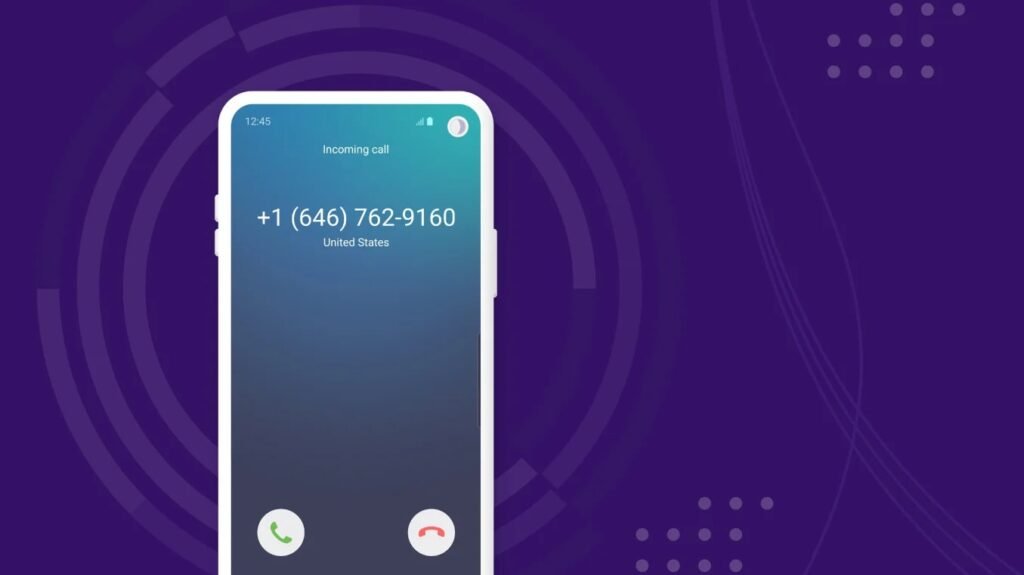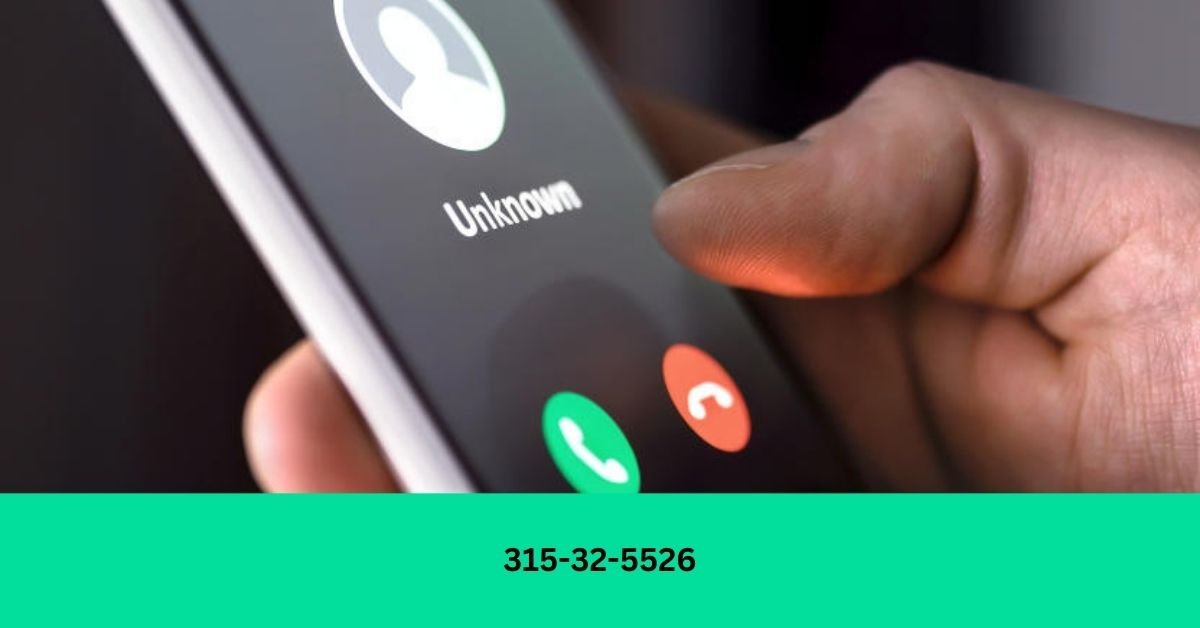The number 315-32-5526 has become a growing concern for many, often leaving those receiving calls from it frustrated and wary. The all-too-familiar sound of an automated voice or prerecorded message has become a hallmark of robocalls, an increasingly pervasive issue in modern communication.
For countless individuals, dealing with these unwanted interruptions has become a frequent nuisance, highlighting a shift in our experience with phone calls as robocalls become more sophisticated and widespread.
This article aims to shed light on robocalls, focusing on the infamous 315-32-5526 number. We’ll break down what a robocall is, how these automated systems operate, and offer guidance on identifying telltale signs that distinguish them from legitimate calls.
Furthermore, we’ll explore these calls’ effects on individuals and businesses, review the regulations designed to curb robocalls and share practical tips to protect yourself from these persistent disruptions.
By the end, you’ll be equipped with knowledge and strategies to handle robocalls, including those linked to 315-32-5526, with greater confidence and clarity.
What is a Robocall?
A robocall is an automated phone call that delivers a prerecorded message to the recipient. Robocalls have become a standard tool for telemarketers, survey companies, and scammers, reaching thousands of people with minimal effort.

Although legitimate robocalls exist, such as appointment reminders or emergency alerts, many are unwanted, especially those promoting suspicious or fraudulent schemes.
Understanding the 315-32-5526 Robocall Phenomenon:
Calls from 315-32-5526 have been reported frequently across the U.S., causing frustration and concerns about privacy and security.
These calls often use tactics to capture attention or manipulate recipients into answering, such as masking the true caller identity or appearing as a familiar area code. This practice is often known as “neighbor spoofing.”
Identifying Signs of Robocalls:
Robocalls can sometimes be tricky to recognize, mainly if they use techniques that mimic legitimate calls. However, several common signs to watch out for can help you quickly determine if an incoming call is a robocall. Here’s how to identify them:
Automated Greetings or Delays at the Start
Robocalls typically begin with a short delay after you pick up, or you may hear an automated greeting immediately. Legitimate calls rarely have a noticeable delay before someone speaks, as live callers typically respond as soon as the call connects.
Prerecorded Messages
A prerecorded voice message is one of the most apparent signs of a robocall. These messages often sound generic, lack a personal touch, and may be highly scripted. The message might be about a “limited-time offer,” an “important account update,” or a warning like “this is your final notice.”
Requests for Sensitive Information
Many robocalls are scams designed to extract personal information like Social Security numbers, credit card details, or bank account information.
Legitimate organizations rarely ask for sensitive information over the phone without prior authorization, so be wary of any robocall requesting such information.
Spoofed or Local Area Codes
Some robocalls use a tactic called “neighbor spoofing,” where the caller ID shows a number with the same area code and prefix as your phone number.
This trick is meant to make you believe the call is from someone nearby, increasing your likelihood of answering. If you frequently see calls from numbers close to your own, they might be robocalls using spoofing technology.
Urgent or Threatening Language
Robocalls often employ a sense of urgency to prompt immediate action. For instance, they might say, “Your account will be closed within 24 hours if you don’t respond,” or “Legal action will be taken if you do not pay this amount today.”
Scammers use this pressure to catch people off guard, hoping they’ll react without thinking.
Repeated Calls from the Same Number
Robocalls often call repeatedly, sometimes several times a day. Receiving multiple calls from the same unknown number, especially within a short time frame, is a red flag.
Legitimate companies generally won’t call multiple times a day without leaving a message or contacting you through other means.
Read: Bosch 0332014150 12v 30a: What Can Be Used Instead!
No Voicemail or Generic Messages
Many robocalls don’t leave voicemails; if they do, they’re generic and vague, such as “This is an important message for you” without any specifics. Voicemails from legitimate callers usually include detailed information, like the caller’s name and reason for the call.
Pressing Keys to Opt-Out or Respond
Robocalls often prompt you to “Press 1 to speak to an agent” or “Press 2 to remove yourself from our call list.” While this may seem like a way to opt out, pressing buttons can sometimes confirm that your number is active, leading to even more robocalls. It’s generally best to hang up without interacting.
The Impact of Robocalls on Consumers and Businesses:

Robocalls can create a severe disruption to both individuals and businesses. Here’s how they affect different groups:
- For Individuals: Constant robocalls interrupt daily life, compromise privacy, and sometimes lead to scams or fraudulent losses.
- For Businesses: Frequent robocalls tie up phone lines, reducing productivity and potentially harming customer relations.
- Health and Well-being: The irritation and stress from repeated robocalls can contribute to anxiety for recipients, particularly those who fear scams or fraud.
Regulations Surrounding Robocalls in the USA:
In response to the increase in robocalls, the U.S. government has enacted regulations to protect consumers:
Telephone Consumer Protection Act (TCPA)
This law limits telemarketing calls, particularly those made using automated systems, and gives consumers the right to opt out of robocalls.
National Do Not Call Registry
Consumers can register their phone numbers on this list to reduce telemarketing calls.
STIR/SHAKEN Technology
This caller authentication technology helps reduce spoofed calls by verifying the legitimacy of a call.
How to Protect Yourself from Robocalls:
Here are practical steps to protect yourself from robocalls, especially those from numbers like 315-32-5526:
Use Call Blocking Services
Many phone carriers offer call-blocking services to filter out suspected robocalls.
Register with the Do Not Call Registry
This can reduce unwanted calls, although it doesn’t stop all robocalls.
Enable “Do Not Disturb” Mode
Many phones allow you to enable settings that limit calls to known contacts.
Report Unwanted Calls
If you receive unwanted robocalls, report them to the Federal Trade Commission (FTC) for investigation.
Dealing with 315-32-5526: Practical Tips
If you are frequently contacted by 315-32-5526, consider the following tips:
- Don’t Answer Unknown Calls: If you don’t recognize the number, let it go to voicemail.
- Avoid Interacting with the Call: If you answer, don’t press any keys or respond, as this can confirm your number is active.
- Use Call-Filtering Apps: Apps like Hiya, Nomorobo, and RoboKiller can help screen and block robocalls.
- Stay Vigilant: Be cautious when making unsolicited calls requesting personal information or making suspicious claims.
Read: What Has Kiolopobgofit in it: Heart Health And More!
Conclusion:
In conclusion, while robocalls from numbers like 315-32-5526 continue to be a frustrating part of modern communication, there are effective ways to protect yourself and reduce their impact.
By understanding what robocalls are, recognizing their patterns, and utilizing available tools and regulations, you can take control of your phone experience and minimize these unwelcome interruptions.
Staying vigilant, reporting suspicious numbers, and using call-blocking technologies can go a long way in keeping your phone line clear from automated disturbances.
Armed with this knowledge, you are now better prepared to navigate the complexities of robocalls and safeguard your peace of mind against calls from 315-32-5526 and similar sources.
FAQs:
Why does 315-32-5526 keep calling me?
The number 315-32-5526 is likely part of a robocall system that uses automated dialing. It may be part of a telemarketing campaign, a scam, or simply an attempt to gather active phone numbers.
Is 315-32-5526 a scam number?
While not all robocalls are scams, the repeated calls from 315-32-5526 could be associated with spam or phishing activities. It’s best to avoid interacting with unknown numbers.
How can I block calls from 315-32-5526?
You can use your phone’s built-in blocking feature or third-party apps like RoboKiller to block calls from specific numbers.
Are robocalls from 315-32-5526 illegal?
Unwanted robocalls, especially unsolicited or deceptive ones, may violate the TCPA or FTC regulations. Reporting such calls can help regulatory authorities take action.
What should I do if I think 315-32-5526 is a scam?
Avoid giving personal information, hanging up, and reporting the call to the FTC. You can also add the number to your phone’s blocked list.
Can answering robocalls lead to more robocalls?
Yes, answering robocalls can sometimes indicate that your number is active, which may increase unwanted calls. Scammers and telemarketers may target active numbers more frequently.
How can I report a robocall from 315-32-5526?
You can report unwanted robocalls to the Federal Trade Commission (FTC) at donotcall.gov or to the Federal Communications Commission (FCC) through their Consumer Complaint Center. Include details of the call, such as the time and nature of the message.
Are robocalls ever legitimate?
Yes, some robocalls, such as calls from healthcare providers about appointments, school notifications, and emergency alerts, are legitimate. However, these usually come from trusted sources and clearly identify the caller.
Can robocalls hack my phone if I answer?
No, answering a robocall alone won’t hack your phone. However, robocalls that attempt to gather personal information or trick you into downloading malicious apps pose a risk to your data and security.
Why do robocallers use numbers like 315-32-5526 repeatedly?
Robocallers often use “spoofed” numbers, sometimes even reusing numbers or selecting numbers that seem local. Numbers like 315-32-5526 can become ordinary in specific robocalling campaigns targeting particular areas or demographics.
How effective is the Do Not Call Registry for blocking robocalls?
The Do Not Call Registry is practical against legitimate telemarketers who follow the law, but it may not stop robocalls from scammers who ignore the regulations. For more protection, consider call-blocking tools or apps.
What is STIR/SHAKEN technology, and how does it prevent robocalls?
STIR/SHAKEN is a technology framework implemented by telecom companies to verify caller identity, reducing the chances of receiving spoofed calls. It aims to prevent robocalls from faking caller ID information and help you identify legitimate calls.





